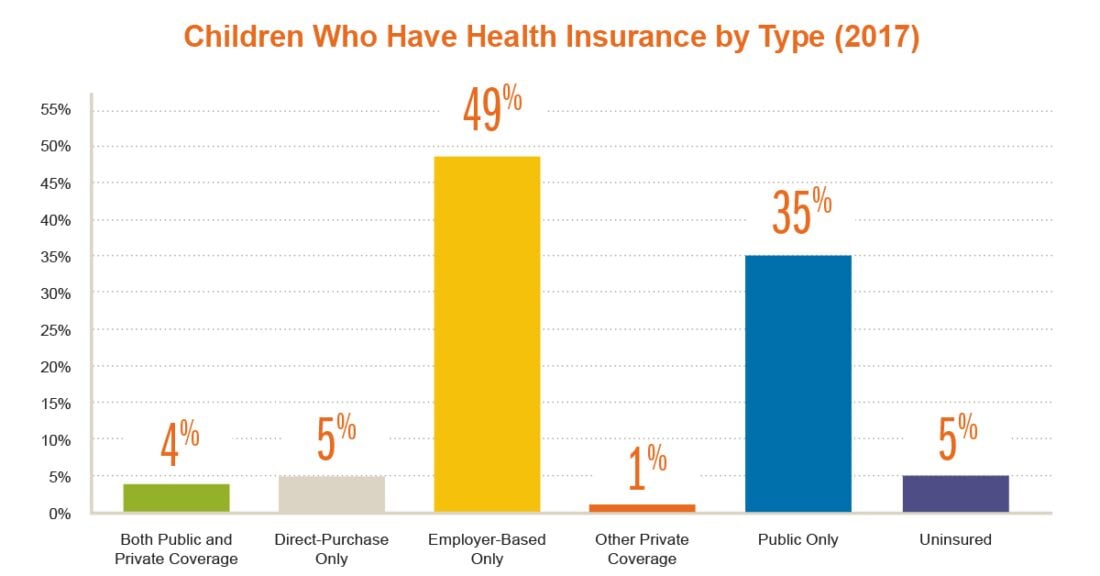Rate of Kids Without Health Insurance Continues to Hold in 2017

From 2009 to 2015, the risk of a child growing up without health insurance dropped annually. Over the past three years, however, this statistic has flatlined at 5% of the nation’s child population. While the rate of uninsured children remained steady, the actual number of kids without health coverage increased for the first time in nearly a decade.
In 2017, 3.9 million children lacked medical insurance in the United States. Most of these children — 75% — are between the ages of 6 and 18. American Indian (13%) and Latino (8%) children are much more likely to lack health insurance compared to the average child (5%).
Medical insurance plays an important role in helping kids remain active, healthy and in school. Compared to their uninsured peers, kids with insurance are more likely to have a regular source of health care that they can access for preventive services and for the treatment of acute and chronic conditions. Health insurance also protects families from financial crisis when a child experiences a serious illness or injury.
Most children either have medical insurance through a parent’s employer-based health care plan (49%) or are covered by public health insurance (35%), such as Medicaid, Medicare, the Children’s Health Insurance Program or a state health insurance program.






